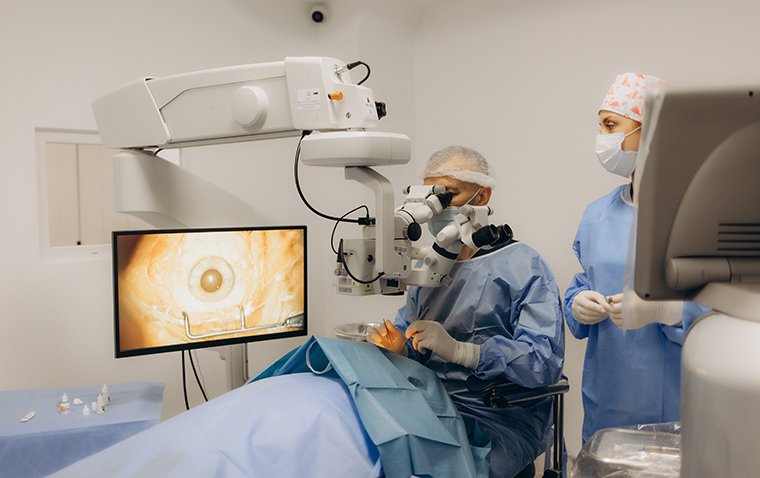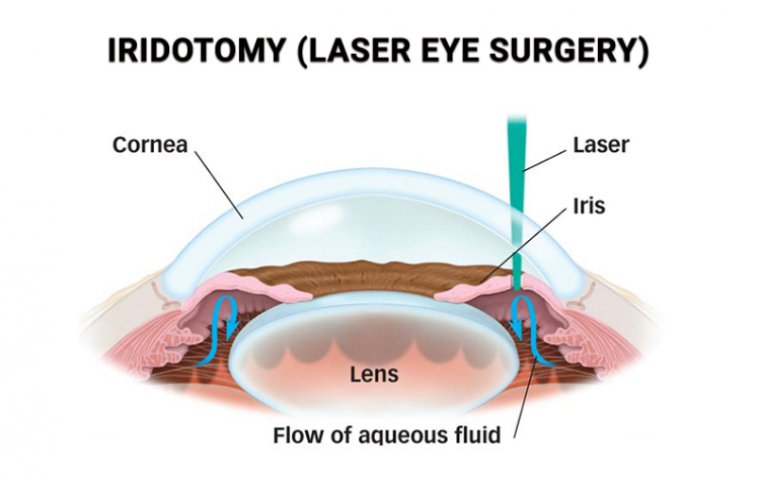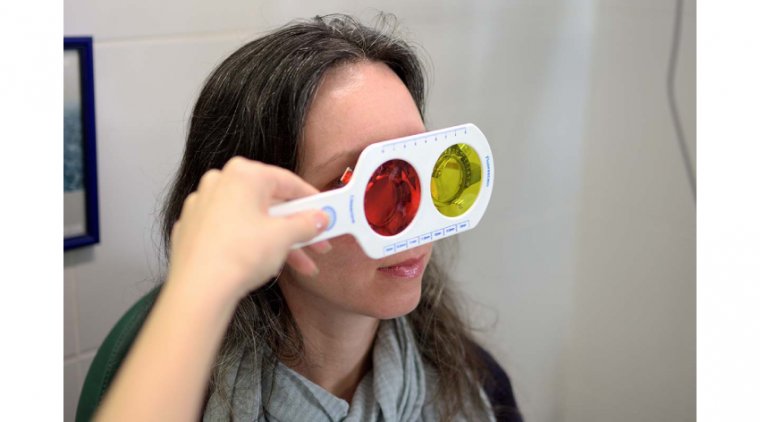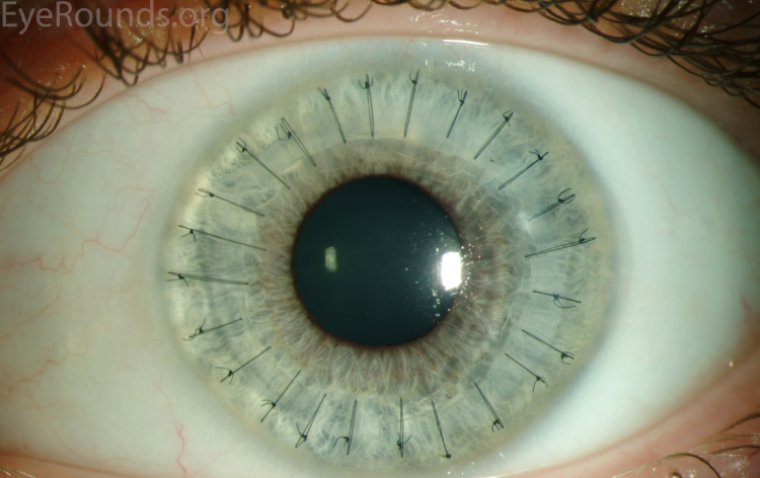
Understanding Capsulorhexis: A Key Step in Cataract Surgery
What Is Capsulorhexis?
Capsulorhexis, derived from the Latin "capsula" (little container) and Greek "rhexis" (rupture), refers to the precise and controlled tear of the anterior lens capsule during cataract surgery. This procedure creates a circular opening through which the cloudy lens (cataract) can be accessed and subsequently removed. This circular opening also facilitates the implantation of the intraocular lens (IOL) in the correct position, ensuring its stability within the eye.
Capsulorhexis is a critical step in modern cataract surgery. A well-executed capsulorhexis ensures:
● Easy removal of the cataractous lens.
● Proper centration and stabilization of the IOL.
● Reduced risk of lens displacement or tilt.
● A decrease in potential postoperative complications, such as capsular opacification or capsular contraction syndrome.
A cataract refers to the clouding of the eye's natural lens, which is located behind the iris and the pupil. It's one of the leading causes of vision impairment and blindness worldwide, especially among the elderly.
As cataracts progress, they can result in:
● Blurred or hazy vision.
● Increased sensitivity to glare and light.
● Diminished night vision.
● Altered color perception.
Surgical intervention becomes necessary when the cataract hampers daily activities or when it impedes the treatment of other eye conditions. During cataract surgery, the cloudy lens is removed and typically replaced with an artificial intraocular lens (IOL) to restore clear vision. The capsulorhexis step ensures that this process is smooth and that the IOL is well-placed to provide optimal visual outcomes.
Understanding Cataract Surgery
Cataract surgery is a commonly performed ophthalmic procedure aimed at restoring clear vision in individuals affected by cataracts. It involves the removal of the eye's cloudy natural lens and its replacement with a synthetic intraocular lens (IOL). The primary goals of cataract surgery include:
● Visual Clarity: The foremost objective is to restore clear vision by removing the opacified lens that scatters light and replacing it with a transparent IOL.
● Safety: Modern cataract surgery methods, like phacoemulsification, employ ultrasonic energy to break down the lens, allowing for its gentle extraction through tiny incisions. This minimally invasive approach reduces the risk of complications and promotes faster recovery.
● Long-lasting Results: With the precise placement and stabilization of the IOL, cataract surgery aims to provide durable visual outcomes. The selection of the right IOL type (monofocal, multifocal, toric, etc.) is crucial in meeting the patient's visual needs and lifestyle.
Role of Capsulorhexis in Lens Extraction and IOL Implantation:
Capsulorhexis plays an integral role in the success of cataract surgery:
1. Facilitating Lens Removal: A well-executed capsulorhexis provides surgeons with clear access to the cataractous lens. It allows for efficient lens fragmentation and aspiration, especially during phacoemulsification.
2. IOL Implantation: The round opening created by capsulorhexis ensures that the IOL is positioned correctly within the capsular bag, which is the thin, clear pocket that once held the natural lens. Proper IOL positioning is paramount to achieving the desired refractive outcome and ensuring lens stability.
3. Reducing Complications: An optimal capsulorhexis size and shape can prevent potential postoperative complications. For instance, an inadequately sized capsulorhexis can lead to capsular contraction syndrome, where the capsular opening shrinks and distorts the IOL. On the other hand, an excessively large capsulorhexis can compromise the IOL's positional stability.
Capsulorhexis Procedure
Capsulorhexis is a critical step in cataract surgery, requiring finesse and precision. Here's a step-by-step guide to performing this procedure:
Step 1: Surgical Preparation
Before the initiation of capsulorhexis, the eye is prepared. This involves the application of topical anesthesia to numb the eye and the use of a speculum to keep the eyelids open.
Step 2: Making the Initial Incision
The surgeon makes a small corneal incision using a microkeratome or blade. This incision allows the introduction of surgical instruments into the eye.
Step 3: Viscoelastic Injection
A viscoelastic substance (like hyaluronic acid) is injected into the anterior chamber of the eye. This maintains the eye's shape, protects the inner structures, and pushes the lens slightly backward, creating a clear space to perform the capsulorhexis.
Step 4: Initiating the Tear
A cystotome, a fine, pointed instrument, or a micro-forceps is introduced through the corneal incision. The surgeon gently punctures the anterior lens capsule, creating a small flap.
Step 5: Continuous Curvilinear Capsulorhexis (CCC)
Using the flap created, the surgeon carefully tears a circular opening in the anterior capsule. This is done in a controlled, continuous motion to ensure the resulting capsular opening is smooth and round. This circular tear is vital for the appropriate positioning and stability of the intraocular lens.
Step 6: Completion and Assessment
Once the desired size and shape of the capsulorhexis are achieved, the viscoelastic material is gently aspirated or left in place for the subsequent steps of cataract surgery. The surgeon then evaluates the capsulorhexis to ensure its adequacy for lens removal and IOL implantation.
Surgical Instruments Used During the Capsulorhexis Procedure:
● Cystotome: A sharp, needle-like instrument used to initiate the tear in the lens capsule.
● Micro-forceps: Tiny tweezers that allow the surgeon to grasp and tear the lens capsule with precision.
● Microkeratome or Blade: Used to make the initial incision in the cornea.
● Viscoelastic Syringe: Used to inject a gel-like substance into the eye to maintain its shape and protect internal structures during surgery.
Benefits of Capsulorhexis
Capsulorhexis, when accurately performed, introduces a multitude of benefits during cataract surgery and for the postoperative phase:
Improved Visual Outcomes and Vision Correction:
1. Clearer Path for Lens Removal: A well-executed capsulorhexis ensures a clear, unobstructed pathway for the removal of the cloudy lens material, making the procedure smoother and more efficient.
2. Optimal IOL Positioning: The round and consistent edge created by the capsulorhexis technique allows the intraocular lens (IOL) to sit in its natural, intended position. This optimal placement contributes to better refractive outcomes, reducing the chances of postoperative astigmatism or other visual irregularities.
3. Better Lens-Capsule Adhesion: The smooth, continuous edge of the capsular opening encourages better adherence between the remaining capsular bag and the IOL. This helps in reducing the risk of posterior capsule opacification (often referred to as a secondary cataract), a common long-term complication where the back of the lens capsule becomes cloudy.
Enhanced IOL Stability and Reduced Risk of Complications:
● Secure IOL Fit: A well-formed capsulorhexis ensures that the IOL remains securely in place within the capsular bag, reducing the likelihood of lens dislocation or shifting postoperatively.
● Reduced Risk of Capsular Tear: Capsulorhexis, being a controlled procedure, diminishes the chances of an unintended capsular tear extending to the periphery, which could complicate the surgery and lead to potential postoperative issues.
● Protection Against Intraoperative Challenges: A successful capsulorhexis provides a safety buffer against certain intraoperative challenges like the "Argentinian flag sign," where an uncontrolled tear can lead to the appearance of the blue and white colors of the Argentine flag, indicating a split in the capsule.
● Minimized Risk of Postoperative Capsule Contraction: A complete and round capsulorhexis reduces the likelihood of anterior capsule contraction syndrome, where the anterior capsule opening shrinks, potentially leading to visual disturbances and IOL displacement.
Risks and Complications
While capsulorhexis is crucial for the success of cataract surgery, it's not without potential complications:
Common Complications:
1. Radial Tear: A tear that extends outward can compromise the integrity of the capsule and make IOL implantation challenging.
2.Incomplete or Irregular Capsulorhexis: An uneven or unfinished tear may affect IOL positioning and postoperative vision.
3. Anterior Capsule Rupture: A break in the front part of the lens capsule might lead to lens material entering the back of the eye.
Management and Safety Protocols:
Use of Viscoelastic Agents: These help in maintaining the depth of the anterior chamber and protecting the inner structures of the eye during the procedure.
High Magnification and Good Illumination: Ensures clear visualization of the capsule for precise incision.
Gentle and Controlled Movements: Slow, deliberate actions reduce the risk of unintended tears.
Considering Alternative Techniques
● In Cases of Pediatric Cataracts: Children's elastic capsules can make continuous curvilinear capsulorhexis challenging, leading surgeons to opt for alternatives like can-opener or radial capsulotomies.
● Advanced or Hard Cataracts: In such cases, the lens nucleus is dense, making the capsulorhexis process riskier. Alternative techniques might be safer.
● Previous Ocular Surgeries or Injuries: In eyes with a history of trauma or surgeries, structural abnormalities might dictate the use of alternative approaches.
Recovery and Post-operative Care
After the cataract surgery involving capsulorhexis, patients often notice an immediate improvement in vision, though complete clarity might take a few days to weeks. Mild discomfort, itchiness, or fluid sensation are common initially but usually dissipate within a couple of days.
Guidelines for Post-operative Care:
Medication: Patients are typically prescribed antibiotic and anti-inflammatory eye drops to prevent infection and reduce inflammation. It's crucial to follow the recommended dosage and schedule.
Avoid Eye Strain: Activities that strain the eyes, like reading or screen time, should be limited in the first 24-48 hours post-surgery.
Protective Eye Wear: To prevent accidental rubbing or trauma, patients are advised to wear protective eyewear, especially while sleeping, for the initial days post-surgery.
Avoid Heavy Physical Activity: Strenuous activities and heavy lifting can increase eye pressure and should be avoided for at least a week.
Keep Water Out: It's essential to keep water away from the eyes for the first week. Hence, activities like swimming or submerging the head in water should be avoided. When showering, care should be taken to prevent water from entering the eyes.
Regular Follow-up Visits: Monitoring post-operative progress is vital. Patients should attend all scheduled follow-up appointments to allow the surgeon to check healing progress, ensure there are no complications, and adjust medications as needed.
Combining Capsulorhexis with Other Procedures
Synchronizing with Other Eye Surgeries: Capsulorhexis, while pivotal in cataract surgery, can often be integrated with other eye procedures to address multiple eye conditions in one surgical session, offering patients convenience and potentially better visual outcomes.
Astigmatism Correction with Toric IOLs: For patients with significant astigmatism, cataract surgery can be combined with the implantation of toric intraocular lenses. The capsulorhexis aids in optimal placement of the IOL, ensuring clearer vision post-surgery.
MIGS (Minimally Invasive Glaucoma Surgery): For patients with coexisting cataract and glaucoma, surgeons might opt to combine cataract surgery with MIGS. Performing capsulorhexis ensures clear access to the lens while enabling the simultaneous treatment of glaucoma.
Corneal Procedures: In cases where there are coexisting corneal issues, such as corneal dystrophies or scars, a combined procedure can be considered. This might involve endothelial keratoplasty alongside cataract surgery.
Refractive Surgery Options
1. Presbyopia Correction with Multifocal or Accommodative IOLs: For those looking to reduce dependency on reading glasses post-cataract surgery, multifocal or accommodative IOLs can be a great choice. Capsulorhexis ensures that these lenses are perfectly positioned for optimal results.
2. Limbal Relaxing Incisions (LRI): For mild to moderate astigmatism, LRIs can be made at the time of cataract surgery to improve the eye's refractive state. The success of such incisions often depends on the perfection of capsulorhexis.
Summary
Capsulorhexis stands as a cornerstone technique in cataract surgery, playing an instrumental role in ensuring the efficacy of the procedure and optimizing visual outcomes for patients. By facilitating efficient lens removal and precise intraocular lens placement, it has revolutionized modern cataract surgeries, enhancing safety profiles and improving post-operative results. However, like all surgical procedures, it's essential to understand its nuances, benefits, and potential risks.
Every individual's eyes are unique, and while advancements in ophthalmology continue to provide groundbreaking solutions, the importance of personal consultation cannot be overstated. If considering cataract surgery or any other eye procedure, a discussion with an experienced ophthalmologist is paramount. They can offer tailored advice, weigh the pros and cons based on individual eye conditions, and guide patients towards the most suitable surgical approach for their needs.
(1).jpg)










